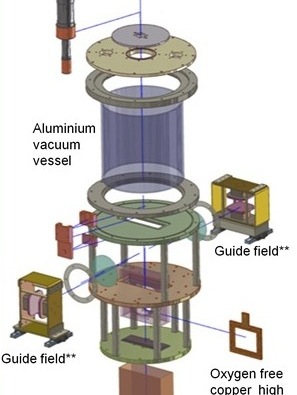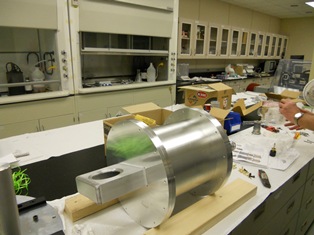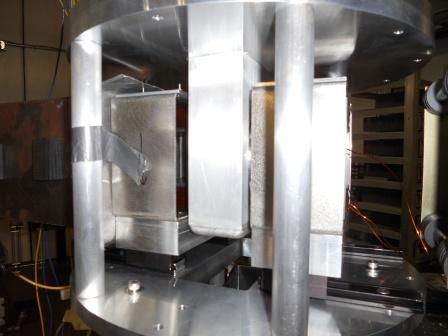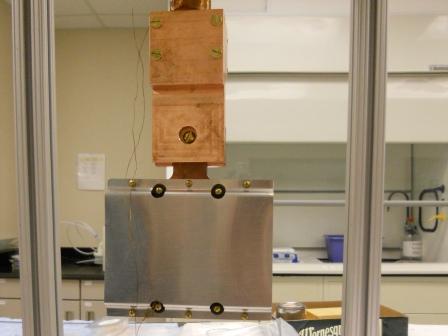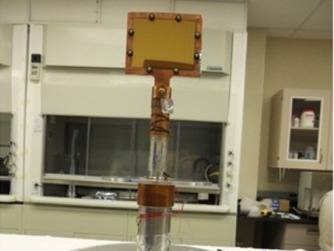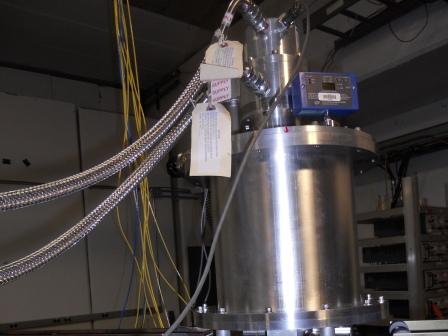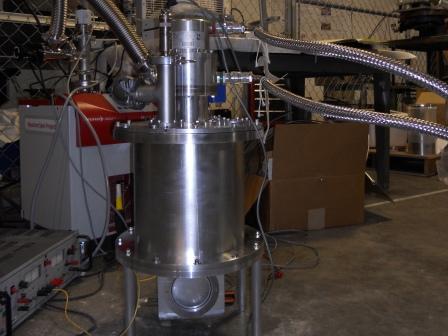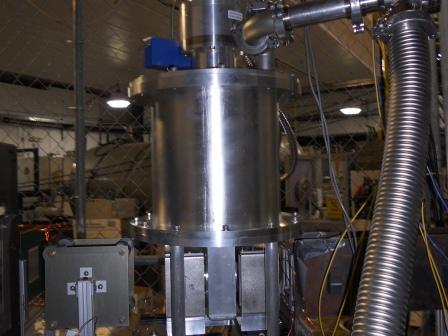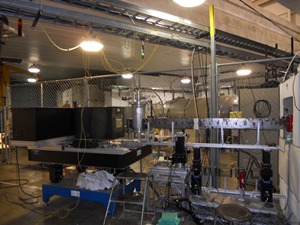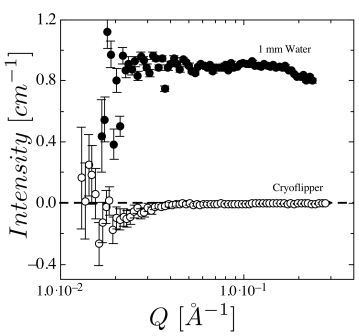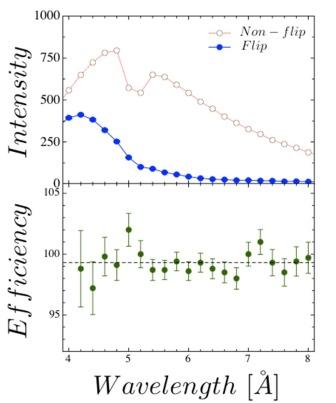Cryogenic Neutron Spin Flipper (CryoFlipper)
∗ This project is supported by the NSF.
• Introduction
π flippers are ubiquitous devices on polarized neutron instruments and many different types are available. A cryoflipper creates a non-adiabatic transition between two adjacent regions of antiparallel magnetic field and hence provides efficient spin reversal. The Type-II Yttrium barium copper oxide (YBCO) high temperature superconducting film provides the desired Meissner effect to separate the field regions when cooled by a closed-cycle refrigerator, eliminating the need for cryogens.
In this project, we developed a device using a 350-nm-thick YBCO film capped with 100 nm of gold on a 78 × 100 × 0.5 mm sapphire substrate (Theva®, Germany). The apparatus is compact (350 mm in length along the neutron beam), consisting of an oxygen-free high-conductivity copper frame, which holds the YBCO film and is mounted to the cold finger of a closed-cycle refrigerator. The part of the vacuum chamber, where the YBCO film is located, is ~ 50 mm wide, which allows us to minimise the distance from the film to the external guide-field magnets. In this design, the maximum neutron beam size that can be used is 40 × 40 mm2 and we can easily switch from a vertical to a horizontal guide field on either side of the YBCO film.
• Device Design
A general description of device design is given below:
The 350-nm-thick YBCO film deposited on a 0.5-mm-thick, single-crystal sapphire substrate is used to separate two regions with magnetic fields applied parallel to the film. This film is mounted in a oxygen-free, high-conductivity (OFHC) frame attached to the cold head of closed-cycle He refrigerator. The mounted film is contained inside a rectangular vacuum vessel, whose dimensions are chosen to minimize the space occupied by the flipper in the neutron beam line. Two sapphire window in the vacuum vessel reduce neutron absorption losses in the flipper to a negligible level.
The mounting hardware for the flipper also supports, electromagnets on either side of the film outside the refrigerator. These magnets can be oriented either vertically or horizontally perpendicular to the neutron beam. Including these magnets, the device occupies about 35 cm along the neutron beam line. The maximum neutron beam size that can be used is 40×40 mm2.
<< Back to Top
• Experiment Picture Gallery
• Efficiency
Measurement of the Cryoflipper flipping efficiency was carried out on the polarized neutron beamline at LENS, Indiana University Bloomington. The efficiency over a wide wavelength range was investigated, the efficiency is extracted using a two flipper measurement[1]. In addition, SANS measurements were performed on the device and negligible scattering was found.
• Conclusion
1. Flipping efficiency measured by the two flipper experiment is 99.3+/-0.1% between λ=4Å and λ=8Å. This result is robust cycle-to-cycle and reproducible.
2. The measurment indicates negligible SANS.
3. The total transmision of the device is 98.6%.
<< Back to Top
• Magnetic field Simulation
To get a better under understanding of the magnetic field distribution in this system, a computer simulation using Radia® based on Boundary Integral method has been carried out.
The simulation verifies that fields on opposite sides of the film are closely parallel to each other and that the field magnitudes are sufficient to guide the neutron polarization efficiently.
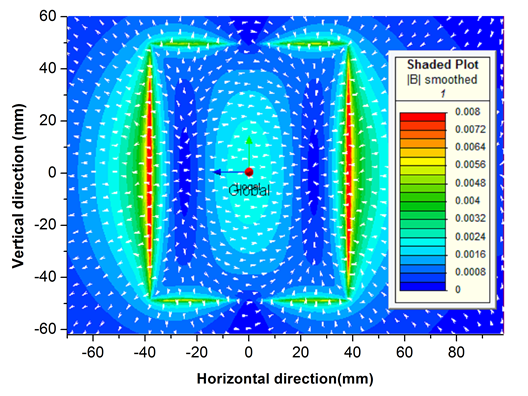
Field strength plot on YBCO film plane
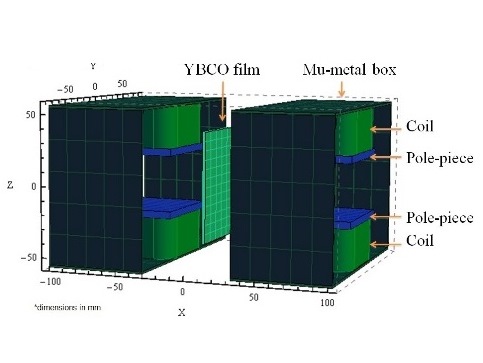
3D model of Experiment configuration in Radia
References:
1. Test of adiabatic spin flippers for application at pulsed neutron sources; W.H. Kraan, et al.; Nuclear Instruments and Methods In PR.A, (2003) 510 334-345.
2. Magnetic neutron scattering and the chemical bond; J.B.Forsyth, et al.; Energy Rev. 17 (1979), 345
3. YBCO films as Meissner screens in the control of polarized neutron beams - Observations and calculations; M.R. Fitzsimmons et al.; NIM A 411 (1998) 401
4. P. Elleaume, et al. Proc. of the PAC97 (1997), 3509
5. A.Washington et al., ICANS-2010 (Proceedings)
Related Resources:
• Poster PDF - Design of a compact cryo-flipper using a YBCO film; S.R. Parnell, H. Kaiser, F. Li, T. D. V. Baxter, R. Pynn; International Collaboration on Advanced Neutron Sources (ICANS XX); Baricloche, Argentina, March 4-9, (2012)
• Design of a compact cryo-flipper using a YBCO film; S.R. Parnell, H. Kaiser, F. Li, T. D. V. Baxter, R. Pynn; Accepted for publication in Physics Proceding from PNCMI, (2012).
Detailed design available upon request, please contact Prof. Roger Pynn
<< Back to Top
